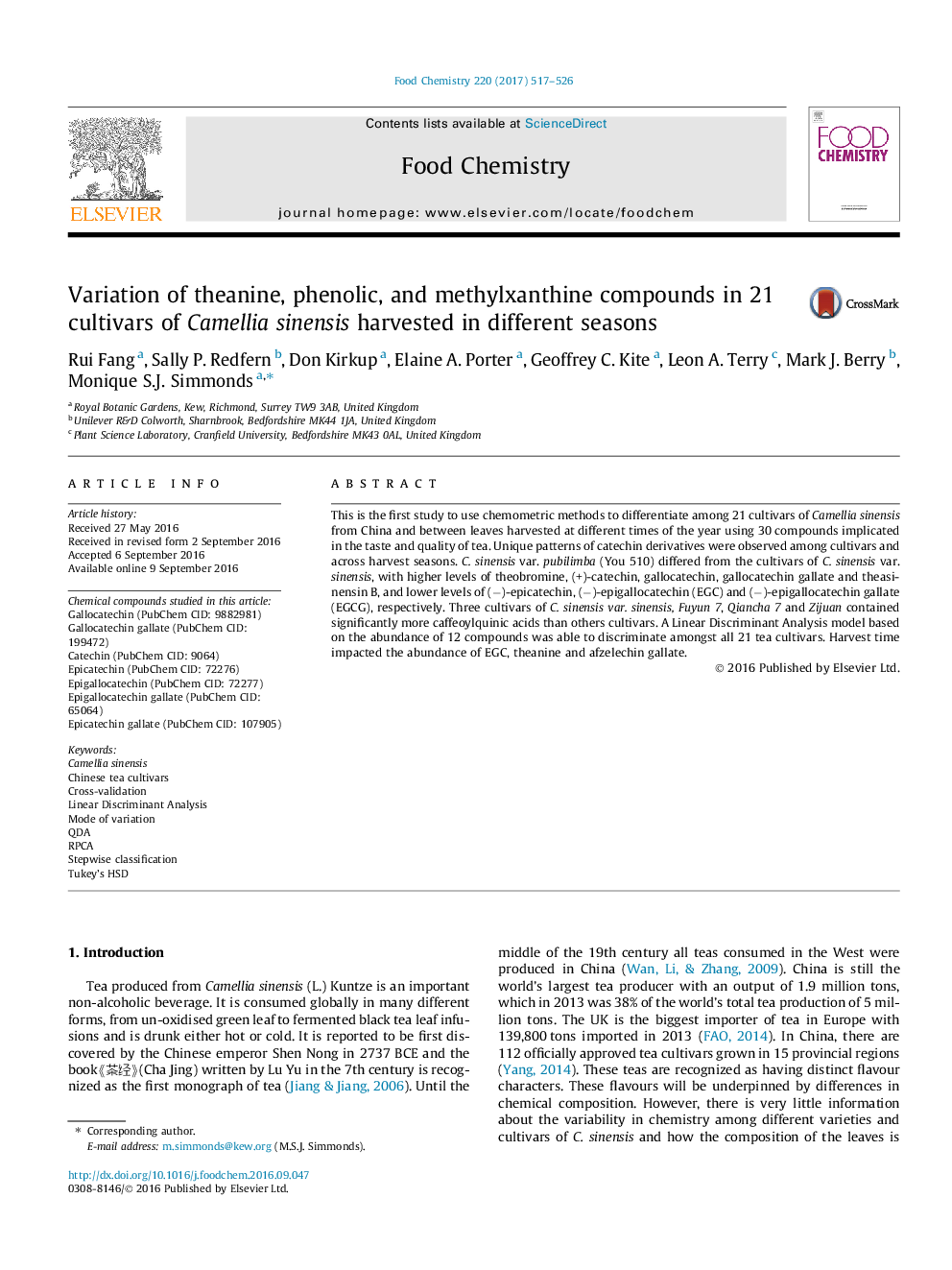| Article ID | Journal | Published Year | Pages | File Type |
|---|---|---|---|---|
| 5134000 | Food Chemistry | 2017 | 10 Pages |
â¢Chemometrics showed that 12 compounds could differentiate among 21 tea cultivars.â¢Harvest time of tea influenced the abundance of many of the 30 compounds analysed.â¢Unique patterns of catechin derivatives occur among cultivars and harvest seasons.
This is the first study to use chemometric methods to differentiate among 21 cultivars of Camellia sinensis from China and between leaves harvested at different times of the year using 30 compounds implicated in the taste and quality of tea. Unique patterns of catechin derivatives were observed among cultivars and across harvest seasons. C. sinensis var. pubilimba (You 510) differed from the cultivars of C. sinensis var. sinensis, with higher levels of theobromine, (+)-catechin, gallocatechin, gallocatechin gallate and theasinensin B, and lower levels of (â)-epicatechin, (â)-epigallocatechin (EGC) and (â)-epigallocatechin gallate (EGCG), respectively. Three cultivars of C. sinensis var. sinensis, Fuyun 7, Qiancha 7 and Zijuan contained significantly more caffeoylquinic acids than others cultivars. A Linear Discriminant Analysis model based on the abundance of 12 compounds was able to discriminate amongst all 21 tea cultivars. Harvest time impacted the abundance of EGC, theanine and afzelechin gallate.
